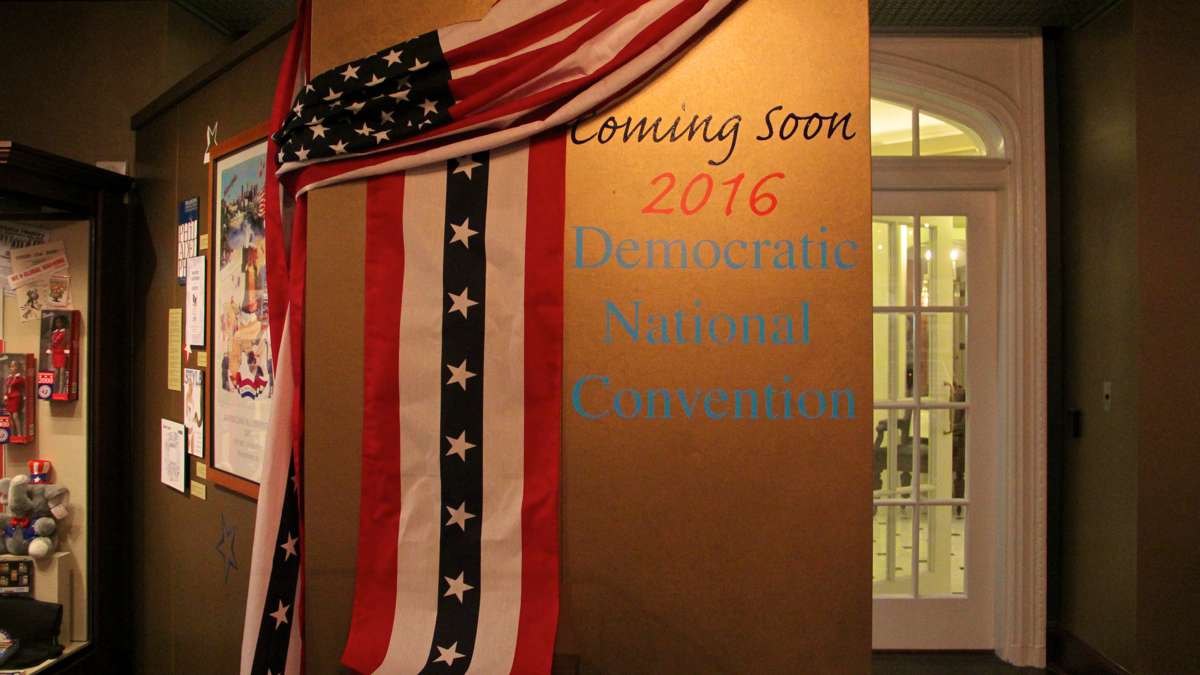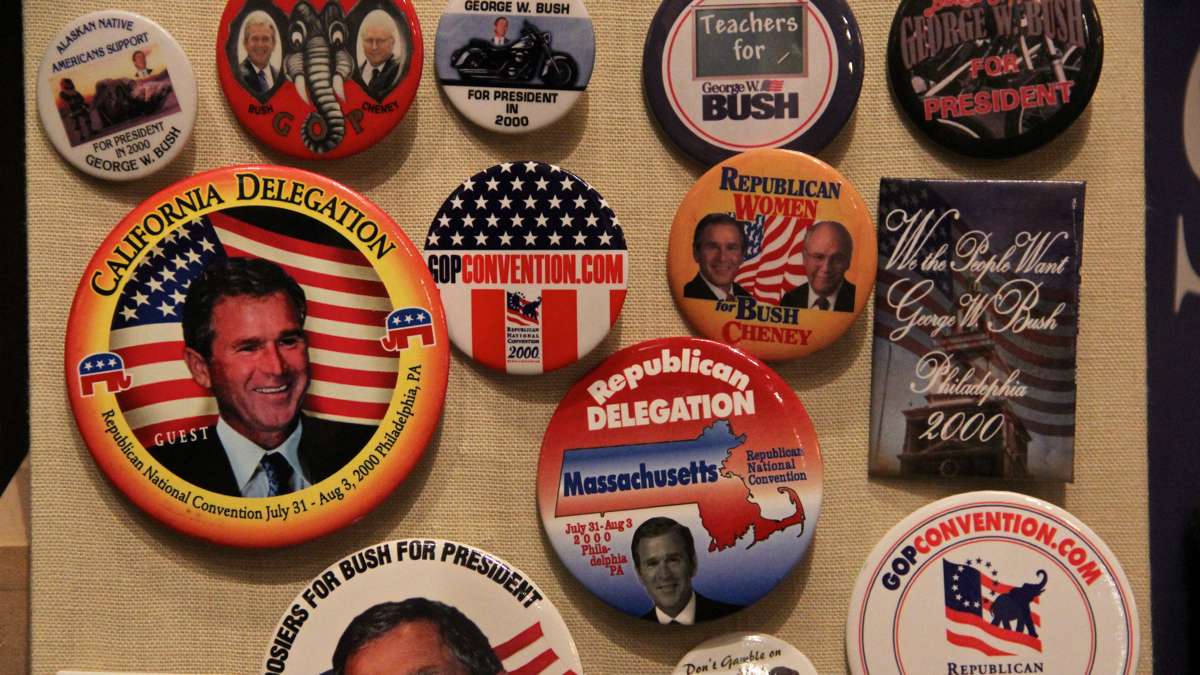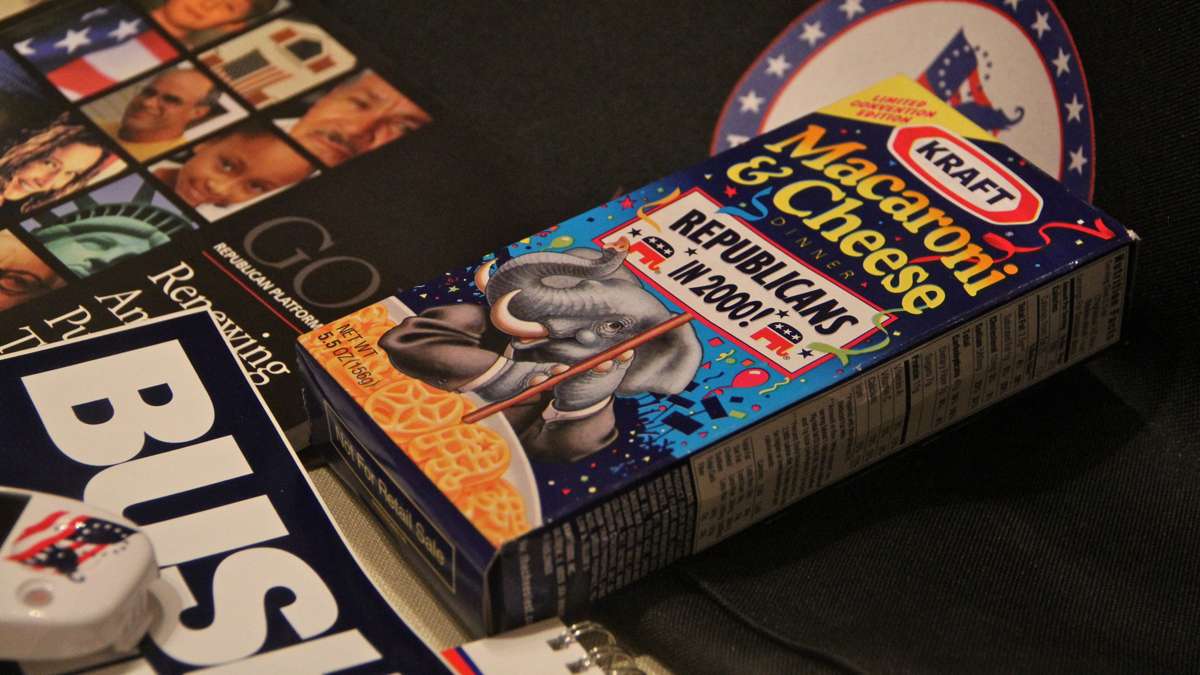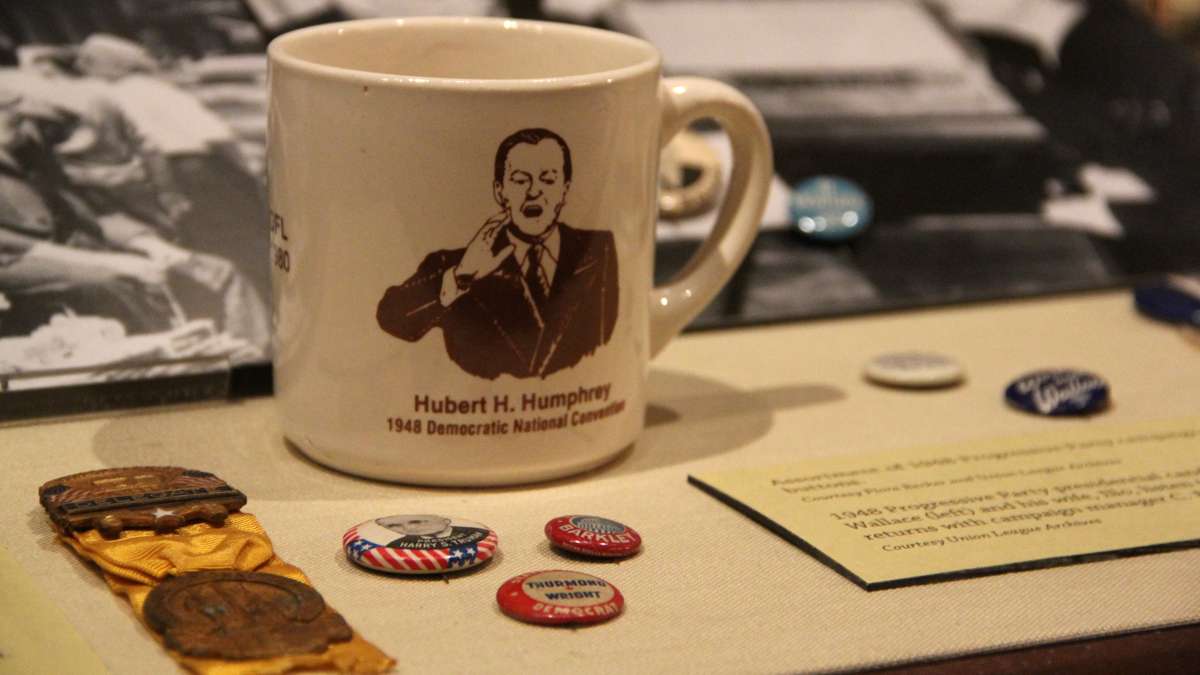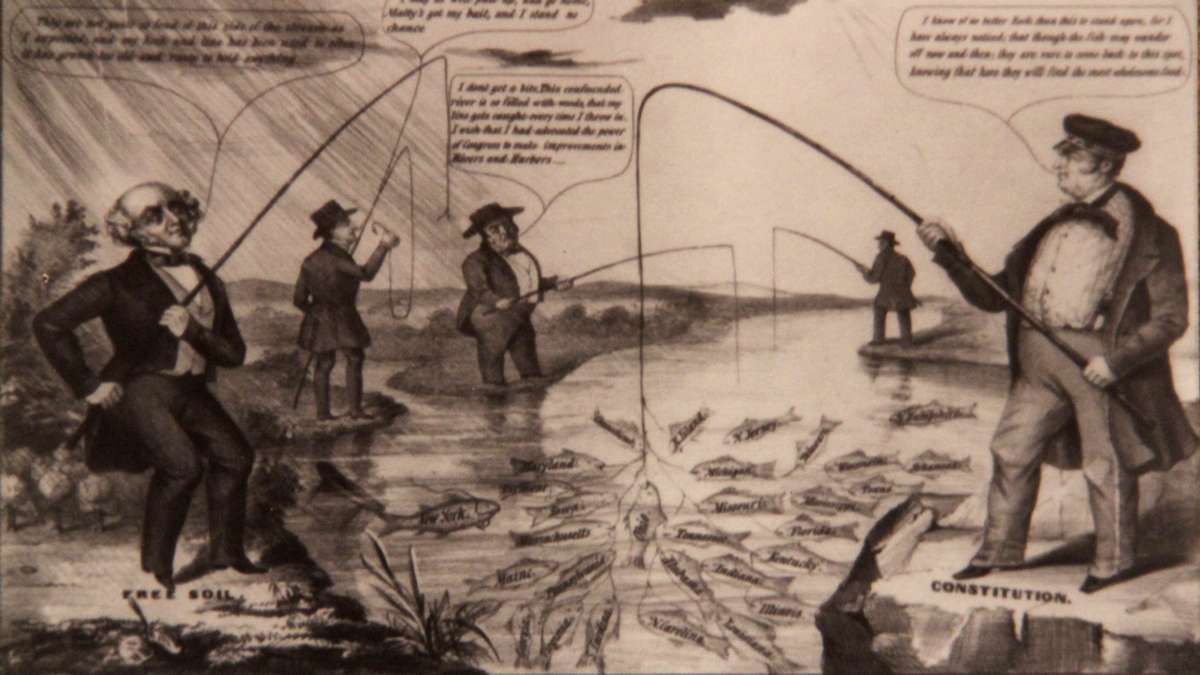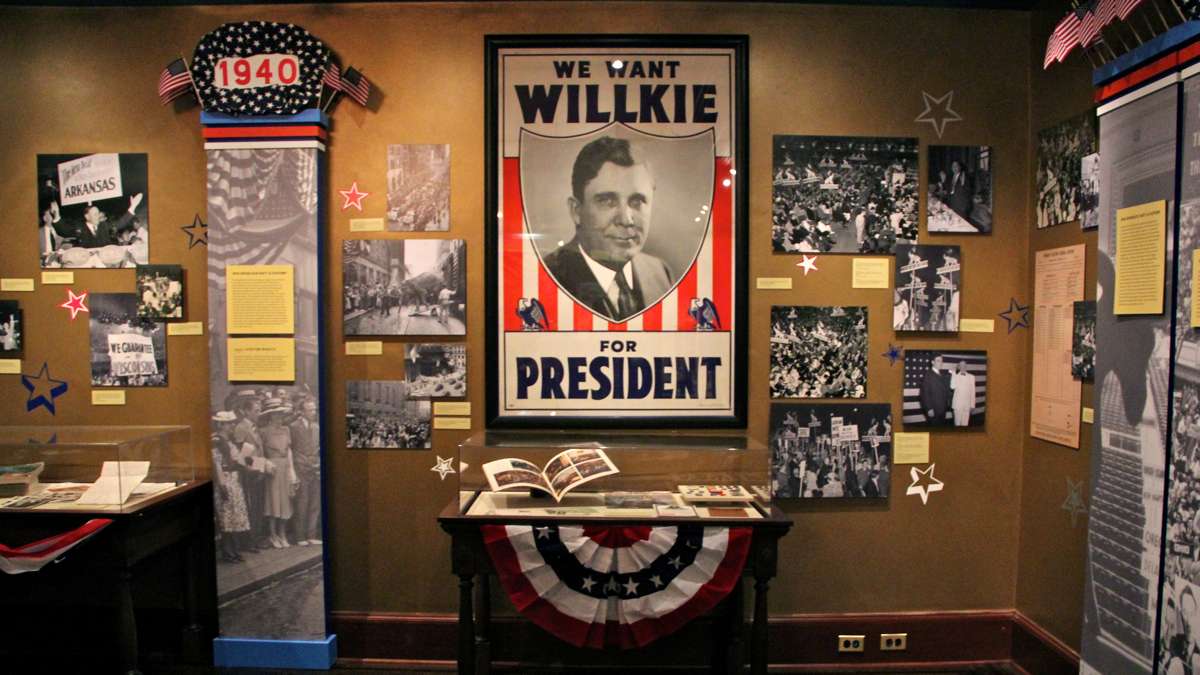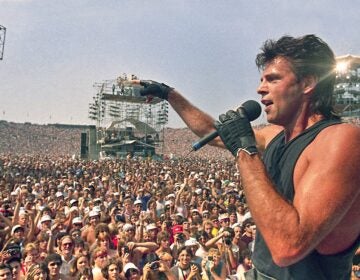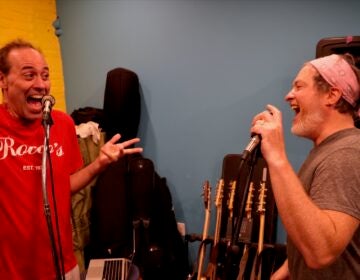Union League explores Philadelphia’s history of conventional wisdom and blunders
ListenSome Republican leaders, including former presidential candidate Mitt Romney, are advocating an open convention in Cleveland this summer, wherein the party’s candidate would be decided on the convention floor instead of at the primary polls.
Most political conventions nowadays are more party celebrations than party business, with the candidate locked in well in advance. But that wasn’t always the case.
In 1848, the Whig Party held its convention in Philadelphia to decide between the “conscience” Whig Henry Clay — who opposed slavery in the new Western territories — and the “cotton” Whig, Gen. Zachary Taylor, who supported it. Slavery was on everyone’s mind.
A first-term congressman from Illinois, Abraham Lincoln, attended that Whig convention in Philadelphia to put his support behind Taylor, as the more electable candidate.
“Here we have the Great Emancipator in 1848 supporting the cotton Whig,” said James Mundy, director of education at the Abraham Lincoln Foundation of the Union League of Philadelphia. “The object is to get elected. If you don’t get elected, it doesn’t matter what you think or what your party platform is.”
Taylor became president.
The Heritage Center of the Union League is getting ready for this summer’s Democratic National Convention in Philadelphia by creating an exhibition of all 11 national political conventions — representing five political parties — the city has hosted in the last 152 years.
There have been conventions for the Democratic Party, the Progressive Party, the Whigs, and the nativist American Party (the Know-Nothings). In 1856, the newly minted Republican Party chose its first presidential candidate in Philadelphia.
“Sweep the Country: Political Conventions in Philadelphia” is a small but dense exhibition on the lower floor of the Union League. Made in partnership with the Philadelphia History Museum at Atwater Kent, it covers a lot of ground in one room, outlining major campaign issues, political infighting, and convention logistics.
Take 1936, when the city’s Republican Mayor S. Davis Wilson pushed to host the Democrats. He saw it as a matter of dollars and cents; with the Great Depression still lingering, Wilson realized national conventions bring in a lot of money.
“He was wise enough to realize political conventions are not dry,” said Mundy. “Philadelphia had blue laws prohibiting purchasing alcohol on Sunday. One of the compromises Wilson made was to suspend the blue laws on Sundays while Democrats were in Philadelphia. A very smart thing to do, and they would do that for every succeeding convention after that.”
Philadelphia played host during two of the next three election cycles. In 1940, in the wake of Roosevelt’s New Deal and while watching the escalation of World War II, the Republicans came to the city to choose its candidate to go against FDR. It was the first national convention to be broadcast on live television.
The chosen candidate turned out to be a black horse, an electrical utility executive named Wendell Willkie.
“A political unknown came out of nowhere in one of the biggest presidential upsets in America history,” said Mundy. “Willkie ran for office and got creamed.”
For the next convention cycle, in the summer of 1948, all three parties of the time — the Republicans, the Democrats, and the Progressives — held their conventions in what was then the Municipal Auditorium in West Philadelphia. Television was a big factor, and Philadelphia was a TV hub.
It was one of the hottest summers on record, and the Municipal Auditorium had no air conditioning. The city set up huge blocks of ice in front of fans to cool down tens of thousands of people. It didn’t work.
“Because of the temperature conditions inside the Municipal Auditorium, the parties swore they would never come back to Philadelphia again,” said Mundy. “And they didn’t, until 2000. So it took 52 years. People have long memories.”
The exhibition features 19th century newspaper engravings, political cartoons, photographs, campaign kerchiefs and pendants, and — in one case — a handwritten delegate speech. Most of the material was pulled from the Union League’s own collection.
The exhibition has an empty spot on the wall for the city’s 12th convention, the Democratic National Convention in July, from which it will harvest a new batch of material — and immediately put it on display.
WHYY is your source for fact-based, in-depth journalism and information. As a nonprofit organization, we rely on financial support from readers like you. Please give today.



